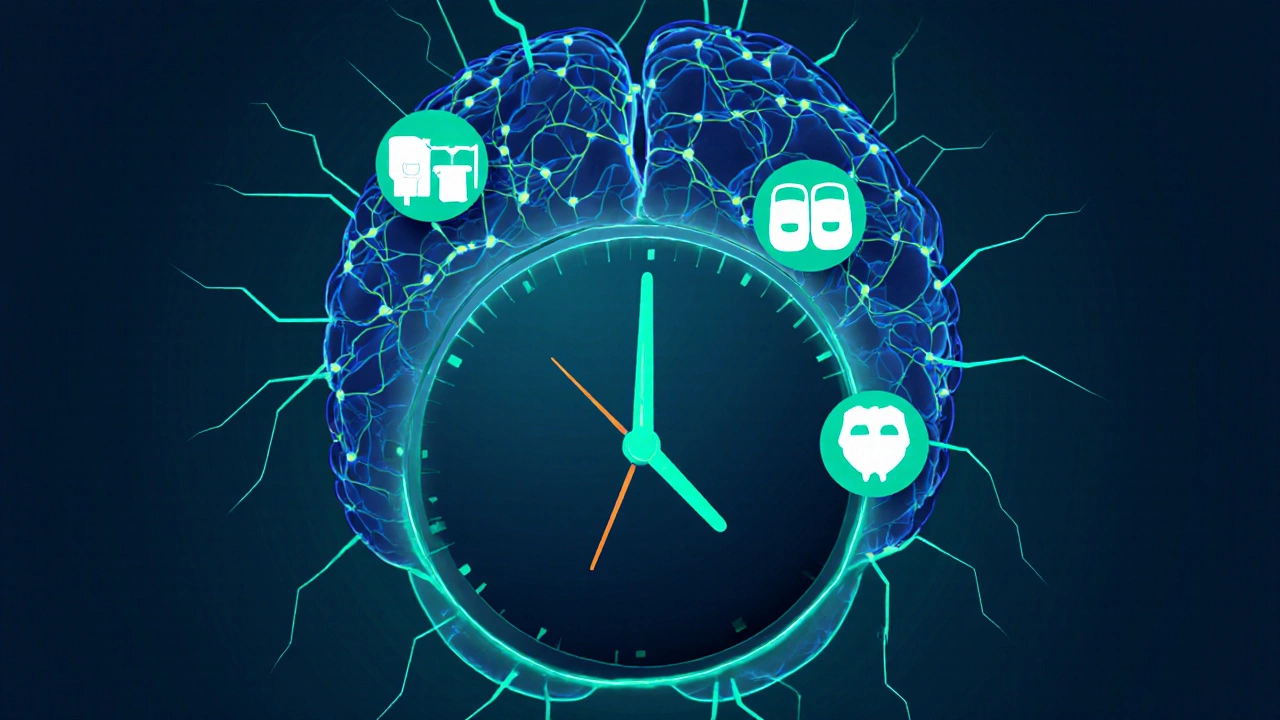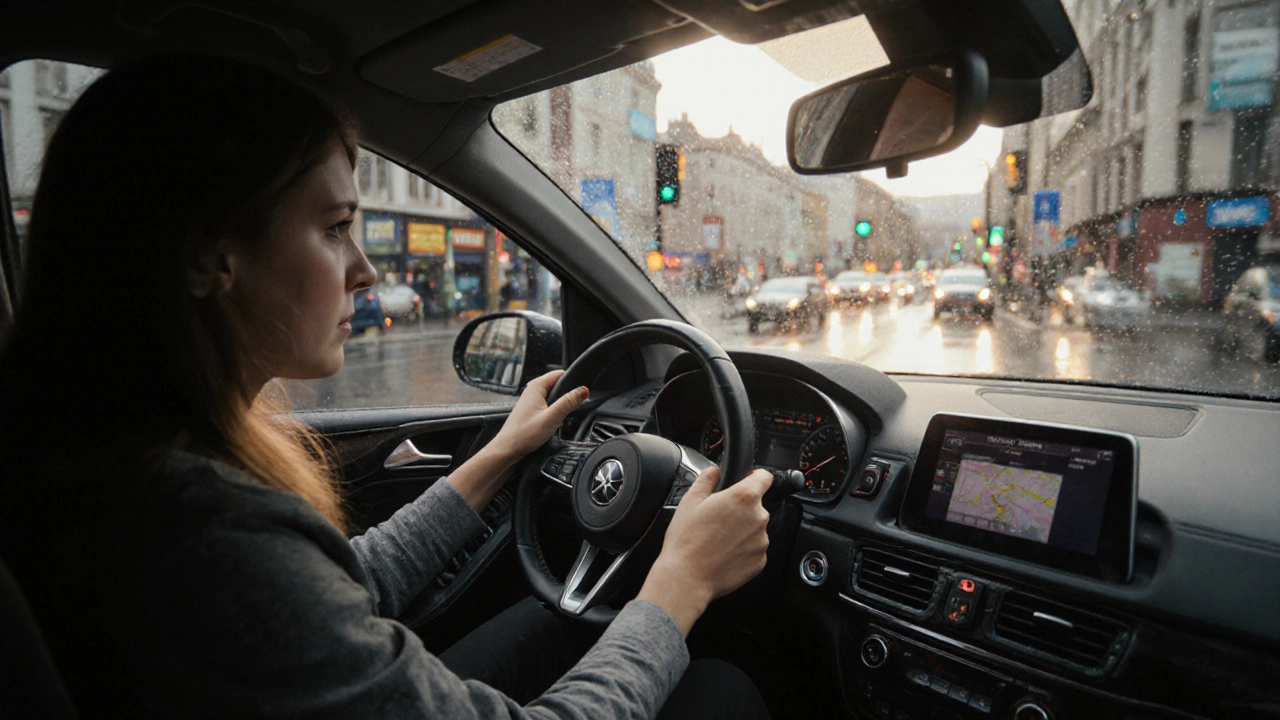Driving Training Cost Calculator
Driving Training Cost Calculator
Compare costs and time to get your driver's license with intensive vs regular training
When someone says they’re doing an intensive driving course, they’re not just taking extra lessons-they’re signing up for a full-on, no-nonsense push to get their license in as little time as possible. Think of it like boot camp for driving. Instead of spreading lessons out over months, you pack them into days or weeks. The goal? To go from nervous beginner to confident driver who can pass the test-fast.
What Exactly Is Intensive Training?
Intensive training in driving means you’re learning to drive in a compressed timeframe. Most people take one or two lessons a week, maybe 30 to 60 minutes each. That’s slow burn. Intensive training flips that. You might have 4 to 8 hours of driving per day, five days a week, for one to three weeks. Some even do 10-hour days over five days straight.
This isn’t just about quantity. It’s about continuity. Your brain doesn’t have time to forget what you learned yesterday. Muscle memory builds faster. You’re in the car every day, dealing with the same roads, the same instructors, the same traffic patterns. That repetition is what makes it work.
It’s not magic. You still need to know the rules, understand road signs, and practice maneuvers like parallel parking and three-point turns. But the speed of learning is different. You’re not waiting a week to correct a mistake-you’re fixing it the next day.
Who Is It For?
Intensive training isn’t for everyone. It’s intense-literally. You need to be mentally and physically ready to absorb a lot of information quickly.
It works best for people who:
- Have some basic knowledge already-maybe they’ve had a few lessons before and just need a boost
- Are under time pressure-like a job that requires a license, moving abroad, or a family event coming up
- Learn well through repetition and immersion
- Can handle stress without burning out
It’s not ideal for someone who’s never been behind the wheel and feels overwhelmed by traffic. That person might do better with a slower pace. But if you’ve tried regular lessons and feel stuck, intensive training can break the plateau.
How Does It Compare to Regular Lessons?
Let’s say you’re aiming to pass your driving test in three months. With regular lessons, you’d probably do 12 to 15 hours total. With intensive training, you’ll likely do 30 to 50 hours in the same time.
Here’s how they stack up:
| Factor | Intensive Training | Regular Lessons |
|---|---|---|
| Duration | 1-3 weeks | 3-6 months |
| Hours per week | 20-40+ | 1-2 hours |
| Learning pace | Fast, continuous | Slow, spaced out |
| Retention | High-daily reinforcement | Lower-gaps between lessons |
| Cost (average UK) | £800-£1,500 | £1,200-£2,000 |
Yes, the upfront cost of an intensive course might seem high. But when you factor in fewer missed lessons, less time off work, and fewer test attempts, it often ends up cheaper. Plus, you’re not dragging out the stress for months.

What Happens in a Typical Day?
A standard intensive course day might look like this:
- 9:00 AM - Meet your instructor at a designated location
- 9:15 AM - Review yesterday’s mistakes and set goals for today
- 9:30 AM - 12:30 PM - Driving practice: urban roads, roundabouts, junctions, highways
- 12:30 PM - 1:30 PM - Break
- 1:30 PM - 4:30 PM - More driving: complex maneuvers, night driving (if applicable), emergency stops
- 4:30 PM - Debrief: what went well, what needs work, what to focus on tomorrow
There’s no fluff. Every minute is purposeful. Your instructor will give you feedback right away-not next week. You’ll get used to making quick decisions. That’s the whole point.
Does It Guarantee a Pass?
No. No course does. But it gives you the best shot.
Pass rates for intensive courses are higher than average. According to the Driver and Vehicle Standards Agency (DVSA), learners who complete intensive training pass their practical test about 65% of the time on their first attempt. That’s compared to around 45% for those taking regular lessons.
Why? Because they’ve had more time on the road, more exposure to real traffic, and fewer chances to develop bad habits. The instructor can spot and fix issues early-like not checking mirrors often enough or hesitating at junctions.
But here’s the catch: if you’re not ready mentally, you might still fail. Intensive training doesn’t fix fear or lack of confidence. It just gives you more tools to work with.
What Are the Downsides?
It’s not all smooth sailing.
First, it’s exhausting. Driving for hours every day is mentally draining. You’ll need good sleep, good food, and time to process what you’ve learned. Don’t try to cram in other responsibilities-like studying or working full-time-on top of it.
Second, it’s expensive upfront. You pay for the whole course before you start. If you don’t pass, you might need to book more lessons. Some schools offer a free retest if you fail within a certain window, but not all do.
Third, it’s not a substitute for practice after passing. Many people who pass intensive courses still feel shaky on their own. That’s normal. The test is a snapshot. Real driving confidence comes from months of experience after you’ve got your license.

How to Choose the Right Course
Not all intensive courses are created equal. Here’s what to look for:
- Ask about instructor experience. Look for someone who’s done this before-preferably with at least 5 years teaching and a track record of pass rates.
- Check if the course includes the test fee. Some do. Others charge extra.
- Make sure the car is modern and well-maintained. Manual or automatic? Pick what you’re comfortable with.
- Read reviews. Not just ratings-actual stories. Look for mentions of instructor patience, feedback quality, and whether the pace felt right.
- Ask if they offer a post-test review. Some will take you out for a few extra hours after you pass to help you build confidence.
A good course will tailor the schedule to you. If you’re struggling with roundabouts, they’ll spend extra time on them. If you’re confident in town but scared of motorways, they’ll focus there. Flexibility matters.
What Happens After You Pass?
Passing your test is a huge win. But don’t stop there.
Many people who do intensive courses feel like they’ve been thrown into the deep end. They pass, but they’re nervous driving alone. That’s okay.
Here’s what to do next:
- Drive with a trusted friend or family member for the first few weeks
- Start with quiet roads before jumping into heavy traffic
- Practice night driving and bad weather conditions when safe
- Consider a Pass Plus course if you’re under 21-it can cut your insurance costs
Don’t rush into long trips or motorway driving right away. Build your confidence slowly. The intensive course got you to the license. Now it’s time to become a real driver.
Final Thoughts
Intensive training isn’t about shortcuts. It’s about focus. It’s about giving yourself the best chance to learn quickly, without distractions or long gaps. If you’re ready to put in the time, the effort, and the mental energy, it can be the fastest, most effective way to get your license.
But remember: the goal isn’t just to pass the test. It’s to drive safely for the rest of your life. Intensive training gives you the foundation. The rest? That’s up to you.
Is an intensive driving course worth it?
Yes-if you’re ready to commit. It’s faster, often cheaper in the long run, and has a higher pass rate than regular lessons. But it’s not for everyone. If you learn slowly, get overwhelmed easily, or can’t take time off work, it might add stress instead of reducing it.
How many hours do I need for an intensive course?
Most intensive courses run between 30 and 50 hours total. That’s usually packed into 5 to 10 days. Some people do 10-hour days over five days. Others spread it over two weeks with 4-6 hours per day. The exact number depends on your starting skill and how quickly you improve.
Can I do an intensive course if I’ve failed my driving test before?
Absolutely. Many people who’ve failed one or two times turn to intensive training to fix specific issues-like poor observation, hesitation, or control problems. The focused, daily feedback helps break bad habits faster than spaced-out lessons.
Do I need to pass my theory test before starting?
Yes. You must have passed your theory test before booking an intensive driving course. The DVSA requires this. The course focuses on practical skills, so you need to already know the rules of the road.
What’s the difference between intensive training and a crash course?
They’re the same thing. "Crash course" is just a casual term for intensive training. Both mean compressed, high-intensity lessons. Some schools use one term over the other, but the structure and goals are identical.
Intensive driving courses work because they remove the delays that make learning slow. No waiting a week to fix a mistake. No forgetting what you learned last time. Just focused, daily progress. If you’re serious about getting your license fast and doing it right, this is one of the smartest paths you can take.

